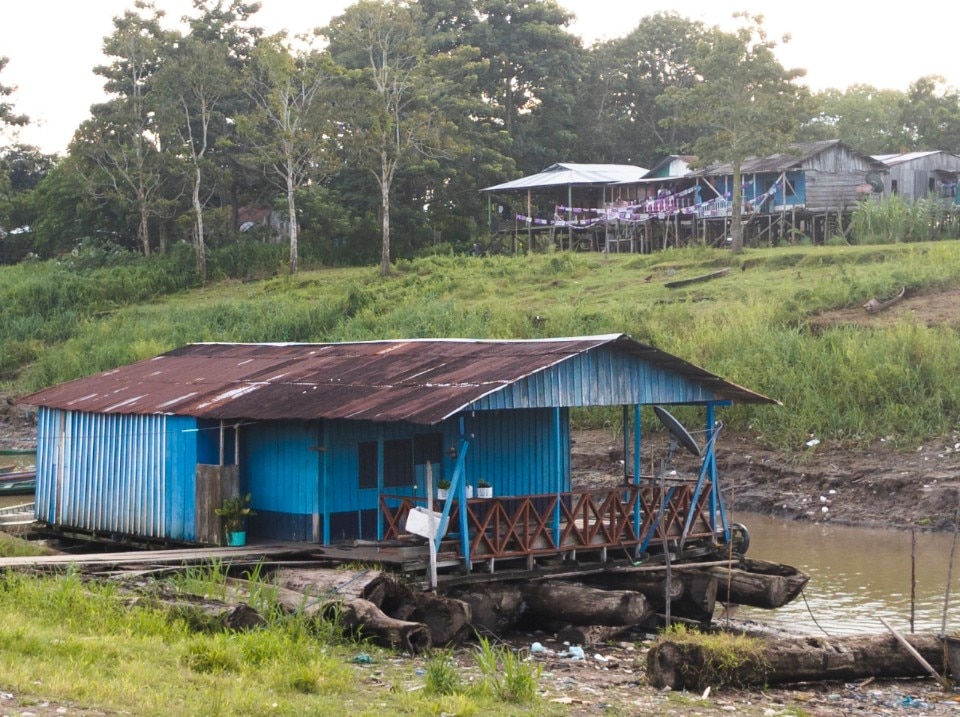If it’s true, as the Greek philosopher Heraclitus claimed, that you can never step into the same river twice, it’s especially true for the Amazon. The Amazon River is the perfect example of constant flux, its speed, depth and width varying wildly, and its waterline rising and falling an incredible 50 feet from month to month.
To make matter worse, every five years since 2005 the Amazon has experienced historic droughts. Within these same years, due to extreme climate changes, the Amazon River has swelled to levels unseen in over a century, with seven of the ten biggest floods in the Amazon basin occurring in the past 13 years. These extreme changes affect not only the flora and fauna within the river and in surrounding areas, they also affect the lives and livelihoods of the humans living on and besides one of the world’s longest and largest rivers.
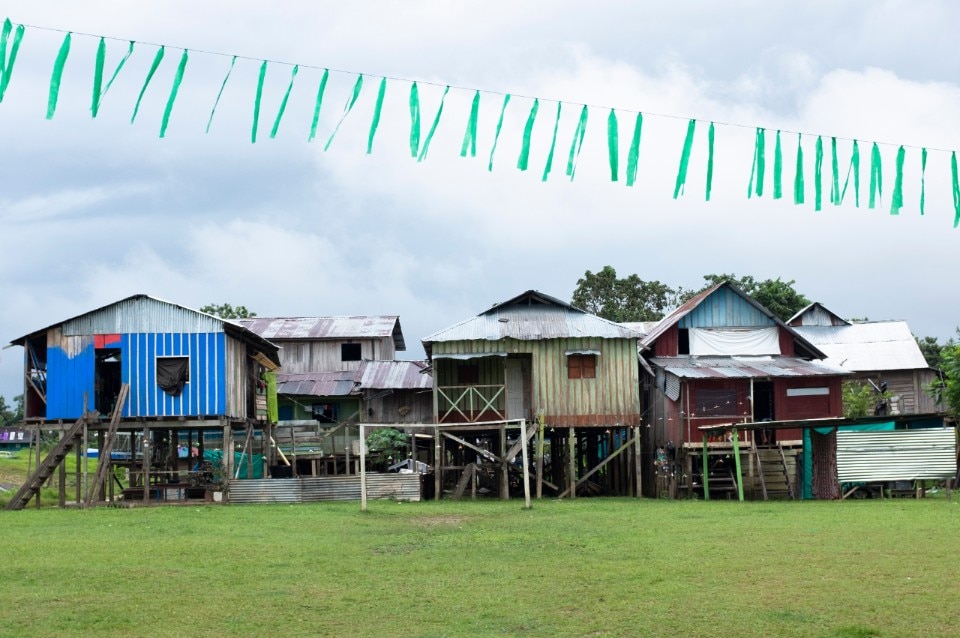
To survive the rise and fall of the Amazon River, the houses on Fantasy Island must by force of nature be amphibian. Palafitos [...] are designed to function both on land and half-way beneath water.
Leticia, a small city in the middle of the Amazon jungle, located on the edge of the Amazon River at the point where the river is at its narrowest, was founded in 1867 as a port town belonging to Peru, but in 1933 officially became part of Colombia. Still, Leticia has more contact, via the Amazon River, to Brazilian and Peruvian cities than any other Colombian urban center. For many decades after its founding the city’s only contact with the world beyond the Amazon were the Catholic priests flown in to convert the local indigenous population and the settlers who massacred the local indigenous population in their search of easy wealth. Up until 1980, there were only around 12,000 people living in and around the city.
Today, Leticia forms a single city of 100,000 people with Tabatinga, the Brazilian city located a five-minute walk from the center of Leticia, while across the river is the Peruvian town of Santa Rosa. Inhabiting this triple border, locals must navigate three different sets of laws, currencies, cuisines, customs, and cultures. In addition to the two different official languages (Spanish and Portuguese), there are also dozens of indigenous languages spoken on the streets of these cities.
Most city dwellers, especially the owners of the local businesses, are of European descendant or mixed-race. The major indigenous communities are located in the jungle, although many indigenous families also live along the river banks or on the river itself.
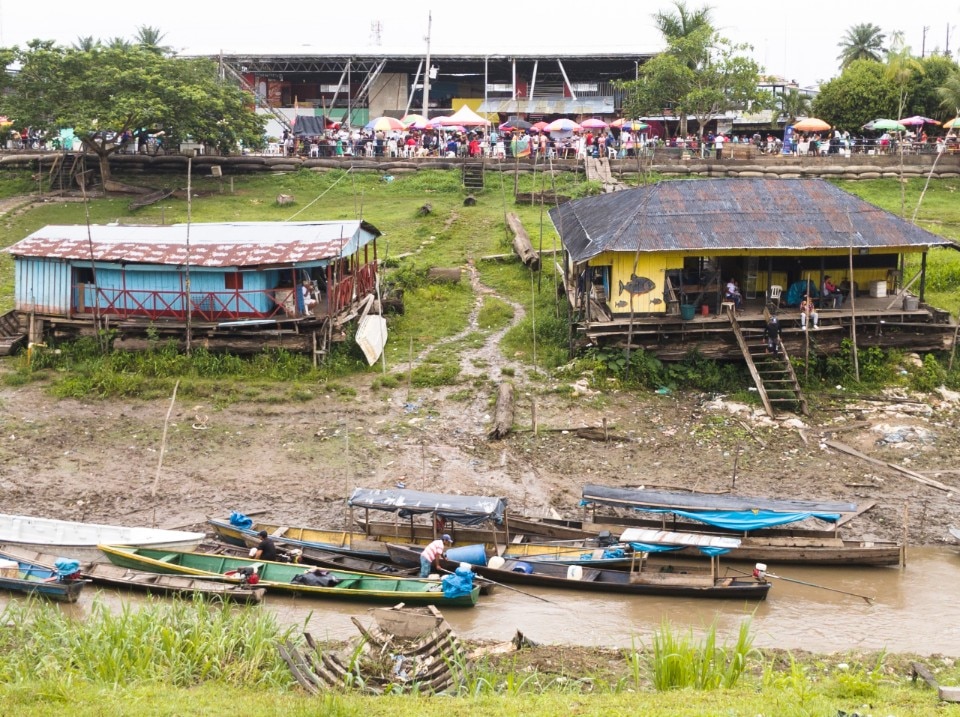
The economic heart of Leticia is its port. Wooden, handmade canoes and small outboard motorboats bring in fresh fish and produce (platanos, yucca, exotic fruits) every day to be sold in the mercado across the street from the port. For much of the year, the river hugs the walls of the port. Cargo is unloaded directly onto the malecón from the boats while people in the city can step into any of the dozens of water taxis that shuttle people up and down the river and its tributaries.
In the rainy season, the river often creeps over the dirt bags stacked a dozen high, crosses the street and floods the mercado. During the dry season, however, the river’s water level drops down dozens of feet below the wall of the malecón. To get to the boats, one must descend from the malecón and walk down two dozen concrete steps and then wade several yards through mud and garbage.
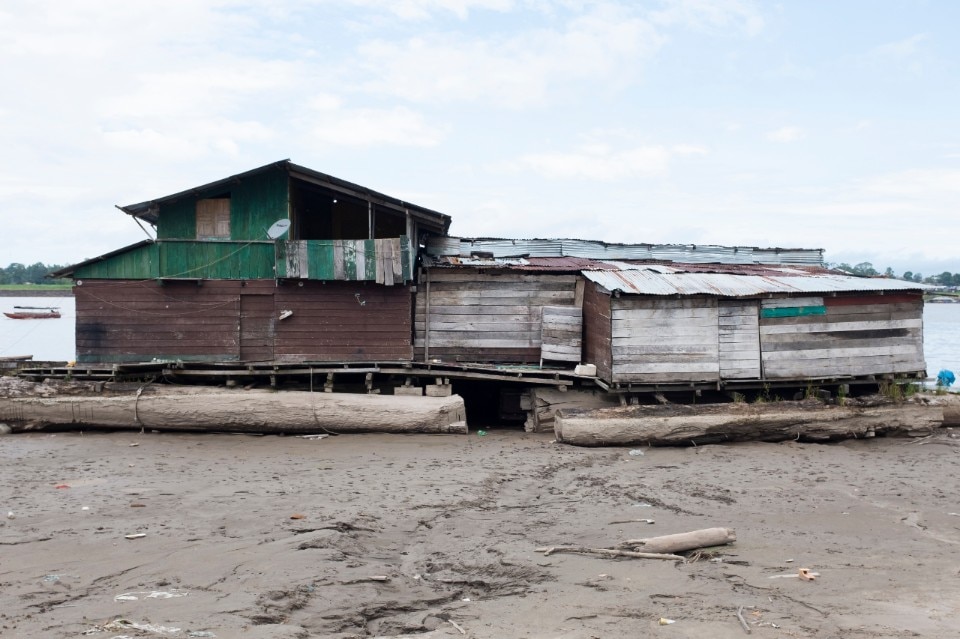
When the river is at its lowest level, six large houses resting on immense round tree trunks squat at a precipitous angle on the hill beneath the port, resembling beached whales. When the river begins to rise, the buildings perch half on land and half in the water. When the river reaches its highest level, these floating houses rock gently on the mighty Amazon River, tied tight by thick ropes to metal anchors on the malecón.
Similar floating homes can be seen up and down the banks of the Amazon River. Several indigenous groups have lived on the river’s edge at the triple border before any of the cities there ever existed. Living for centuries in such close proximity to the largest, most volatile river, they have adapted their lives and architecture to the ups and downs of the Amazon river, so much so that anthropologists have called them an “amphibious culture.” The owners of these houses pay no rent, possess no official deeds or titles to the land, and have no fixed address, and are thus truly “floating populations.”
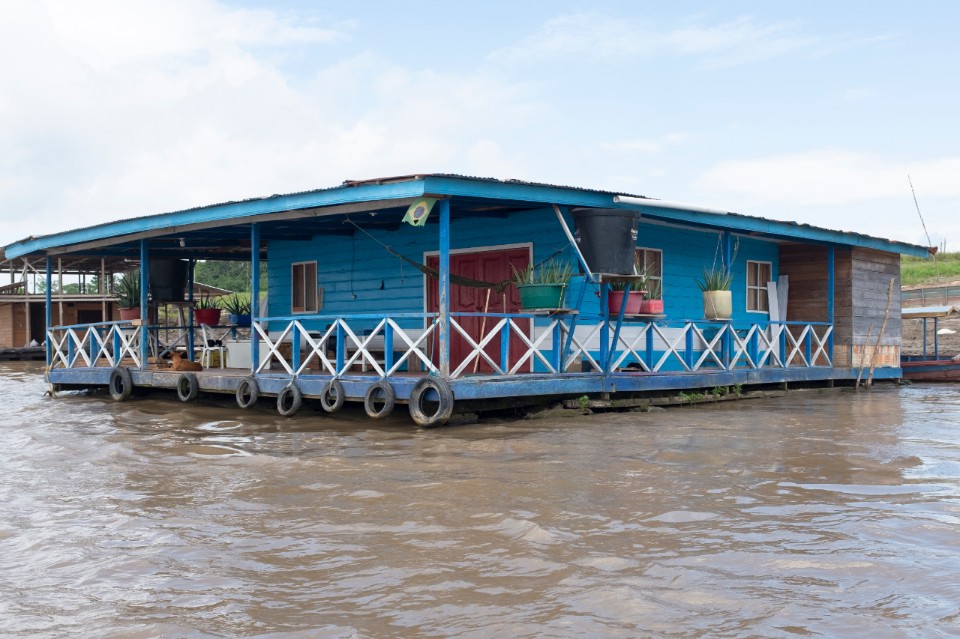
Although local indigenous communities have for centuries built amphibian homes, a new variety of floating architecture has appeared on the river’s edge. Flotantes, as they are called in Spanish (flutuantes in Portuguese), are homes that also serve canoes and boats as gas stations, hardware stores, offices, grocery stores, restaurants or bars. There are also floating boat terminals and even floating parking lots. A few of the flotantes are constructed as flat-bottomed boats but most, like the floating homes, use giant Amazon jungle tree trunks strapped to the bottom of the constructions to buoy themselves up.
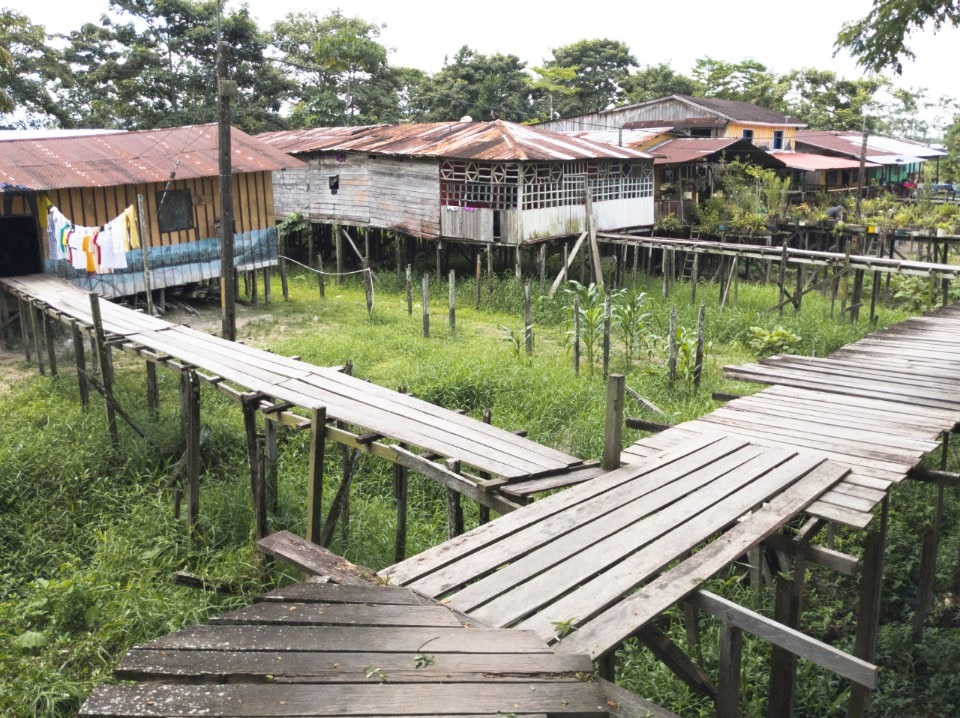
When the water level of the Amazon River begins to drop, a small island opposite the port in Leticia emerges. Local residents hammer together wooden planks to create a single, improvised bridge over the river inlet to connect their island to the city.
Named La isla de la fantasía (Fantasy Island) and settled over the past 50 years by approximately 200 indigenous families, this island is not officially considered part of Leticia. A consumer dead-zone without streets, parks, hotels, restaurants, bars or cafes, the area is represented on Google Maps as an empty grey area on the city’s edge.
The town located on the top of the island undergoes a complete sea change over the year. When the river is low, usually from September to February, the Amazon River retreats to the far side of the island and residents grow plants and crops and can walk to the port. When the river rises, usually between the months of March and August, the gardens lie buried beneath the river and residents must use canoes whenever they wish to walk out of their homes.
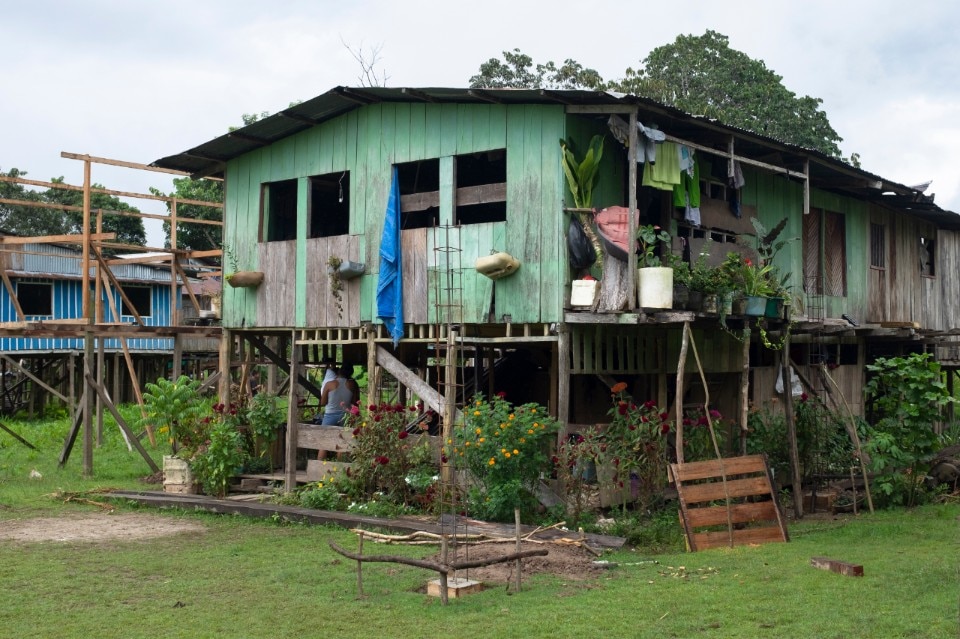
To survive the rise and fall of the Amazon River, the houses on Fantasy Island must by force of nature be amphibian. Palafitos, one- or two-story houses built on wooden stilts sunk into the earth, are designed to function both on land and half-way beneath water. When the river buries the island, the palafitos appear to be floating on the surface of the water, the wooden piles that anchor them to the island hidden from sight. When the waters recede, these homes hover high above the earth on stilts.
When constructing their home, people normally calculate the height of the stilts from last year’s water line, a line that remains visible on trees and homes throughout the year. Any fluctuation in the water level of the new year, however, can lead to flooding within the house. When the water level surpasses the height of the home, owners must construct scaffolding to raise their floors above the encroaching water, yanking out the floor, plank by plank, and rebuilding it higher, often several times a year. Palafitos are thus constructed to be easily reconstructed, and both the houses and the wooden stilts they are built on are made from the same Amazon hardwood as the water-resistant wooden canoes.
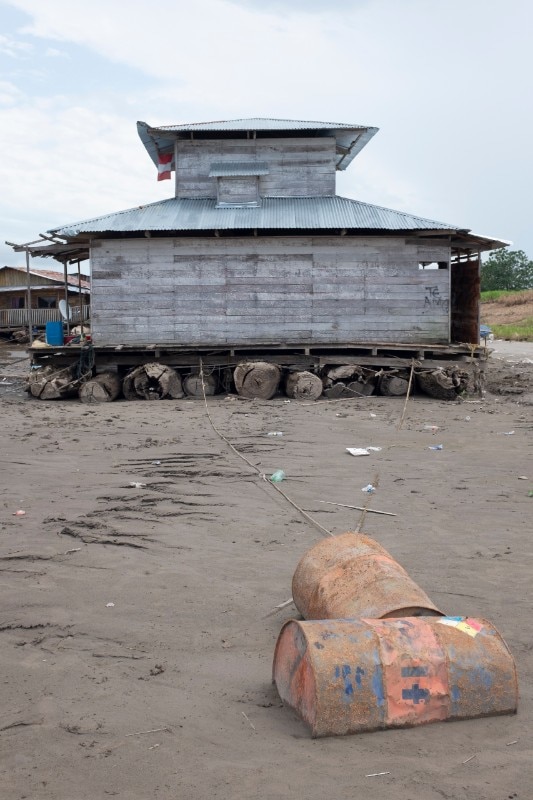
In the Amazon, everything solid eventually melts into the water, and this island is heading in that direction.
Although residents live rent-free, La isla de la fantasía is no paradise island. Formed as it is from deposits of sedimentation carried by the river over time, the island offers no solid earth upon which to build homes, and is thus considered high-risk real estate. In addition, there is no electricity, internet, running water or sewage system on the island. Most of the homes are bare-bone rib-shacks that hide extreme poverty behind bright colors. Due to the never-ending ebb and flow of the river, plus the intense seasonal flooding, chunks of land from the banks of La isla de la fantasía are constantly being eroded. In the Amazon, everything solid eventually melts into the water, and this island is heading in that direction.
Due to the deforestation that is decimating the Amazon Jungle and the rise in temperatures worldwide, the Amazon River, the most protean, shape-shifting body of water in the world, continually suffers ever greater transformations. Even though it is generally considered a universal principle, Heraclitus’ concept of flux has been essentially altered by the works of man, and thus it is impossible to predict what local residents in this particular bend of the Amazon River will be stepping into in the years to come and how, if at all, their communities will stay afloat.
All images are provided by Kurt Hollander


